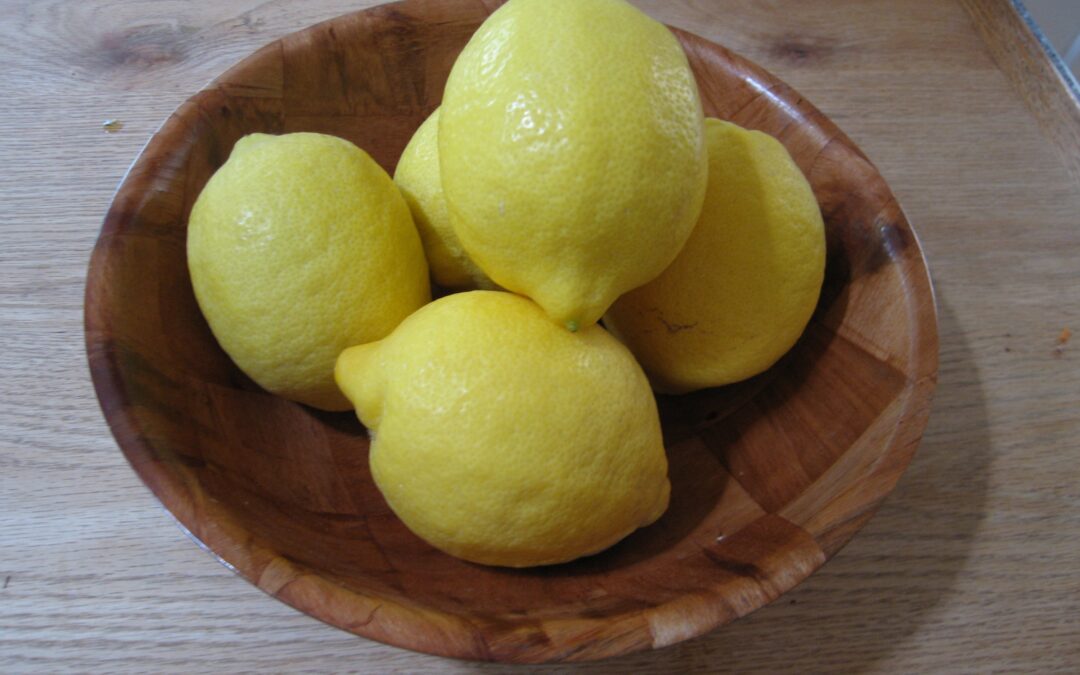
by plant4health | Sep 17, 2015 | cancer, Healing, Nutrition, Plant-based, Recipes, Vegan, WFPB, Whole food, Whole food, plant-based
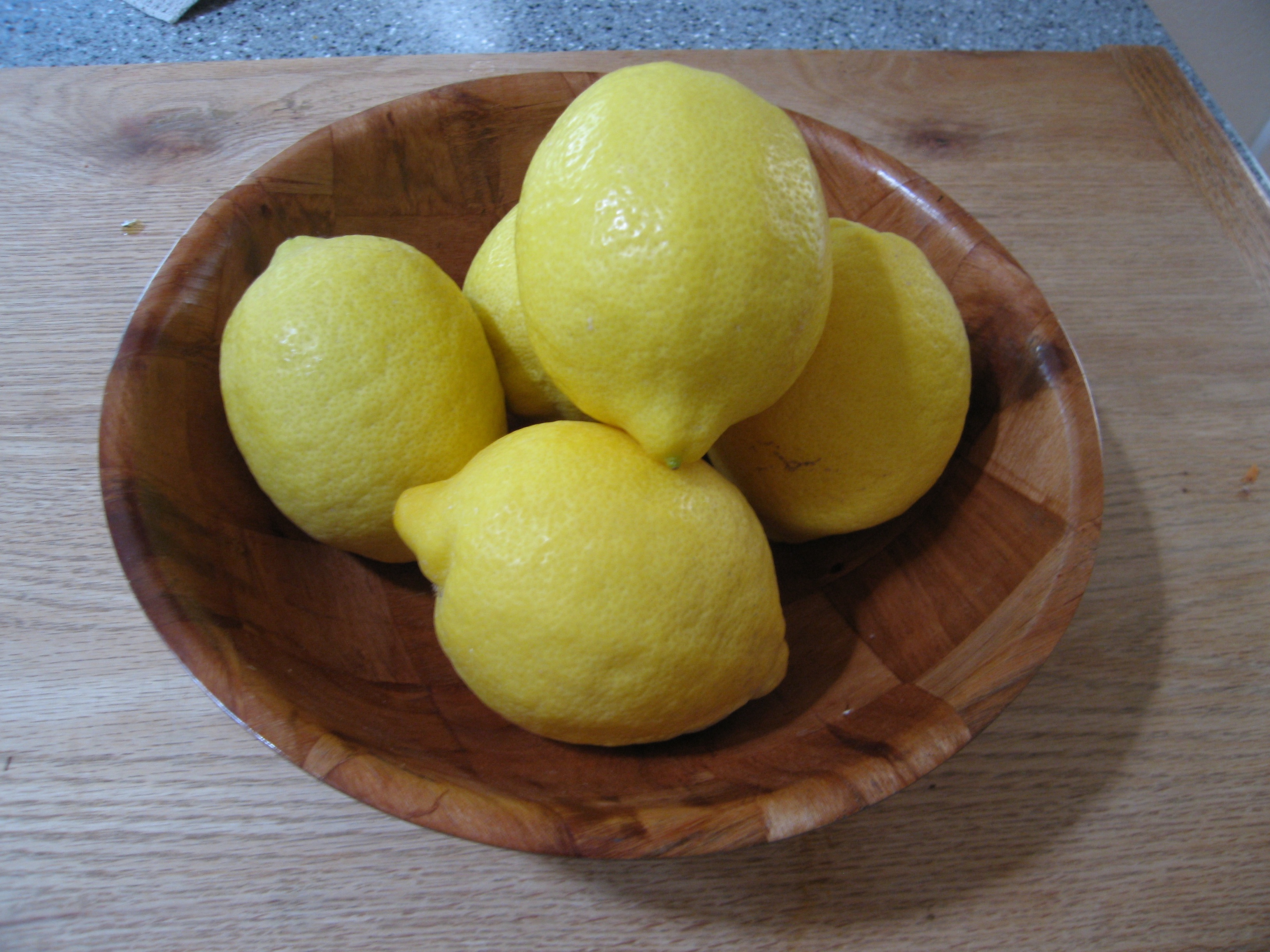 Last month, I wrote about food synergy, how healing through food is not about obtaining large amounts of any single nutrient, but how whole plant-based foods provides a complex mix of nutrients that work together synergistically within your body to create powerful health benefits we have yet to understand. My next series of blogs are going to take this concept one step further by looking at how specific food combinations enhance the nutrient potency of your meal and the bioavailability of those nutrients.
Last month, I wrote about food synergy, how healing through food is not about obtaining large amounts of any single nutrient, but how whole plant-based foods provides a complex mix of nutrients that work together synergistically within your body to create powerful health benefits we have yet to understand. My next series of blogs are going to take this concept one step further by looking at how specific food combinations enhance the nutrient potency of your meal and the bioavailability of those nutrients.
Today, I’m going to focus on lemons. On their own, lemons contain many nutrients that boost the immune system and fight infection: citric acid, calcium, magnesium, Vitamin C, bioflavonoids, pectin, and limonene. They provide strong antibacterial and antiviral properties, as well as act as a digestive aid and liver cleanser. Lemons are also alkaline which helps balance your body’s pH, protecting you from inflammation and disease. When eaten with specific other foods, lemons are a wonderful example of food synergy as they enhance nutrient absorption and potency. Take a look at these powerful food combinations: (more…)
by plant4health | Sep 5, 2015 | Recipes, Vegan, Whole food, plant-based
[recipe title=”Gerry’s Gazpacho”]
This is a recipe provided by Gerry Gospe and a wonderful way to celebrate tomatoes on a hot summer night.
Note – this recipe is super easy to make if you have a juicer (for making the tomato juice) and if you have a Vitamix or similar blender. Then you do not need to chop everything so finely.
Ingredients:
- 4 cups tomato juice. If you have a juicer, you can make fresh tomato juice in it.
- 2 1/4 peeled, or not, seeded, or not, chopped red tomatoes
- 1/2 cup minced red onion
- 1 clove garlic, minced
- 1 medium bell pepper, minced
- 1 peeled, seeded, diced cucumber
- 2 scallions, finely sliced
- 1/2 fresh jalapeño, minced and seeded (unless you like it hot)
- 1 cup minced celery
- Juice of 1/2 lemon and 1 lime
- 2 T. balsamic vinegar, or to taste
- 1 Tsp. each dried tarragon and basil, or 3 Tbsp. fresh
- 1/2 to 1 Tsp. cumin
- 1/4 cup freshly minced parsley
- 1/4 cup minced cilantro
- 1-2 Tbsp. olive oil (optional)
- Salt, pepper and cayenne to taste
Directions:
- Make the tomato juice with a juice or by hand, squeezing the tomatoes
- Add all ingredients through the lemon and lime juice into the Vitamix, blender or food processor, if using. Process on low for 30-40 sec. Otherwise you can simply stir the ingredients.
- Add the remaining ingredients (from balsamic vinegar on), stir and chill for an hour or so. Serve and enjoy!
[/recipe]
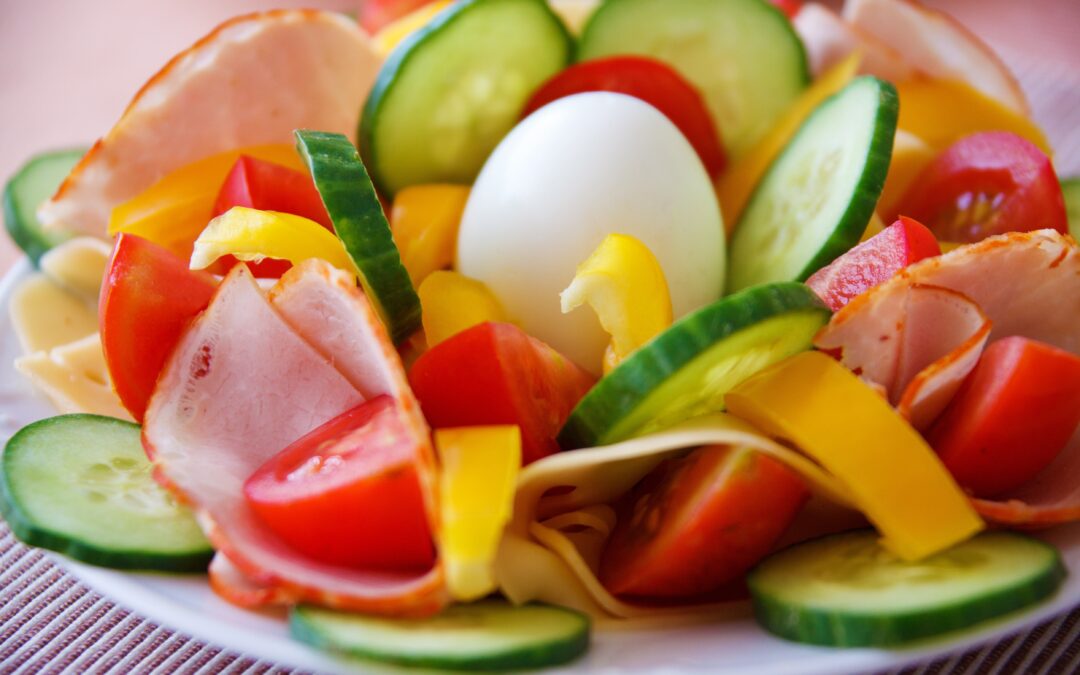
by plant4health | Aug 20, 2015 | cancer, Healing, Nutrition, Plant-based, Vegan, WFPB, Whole food
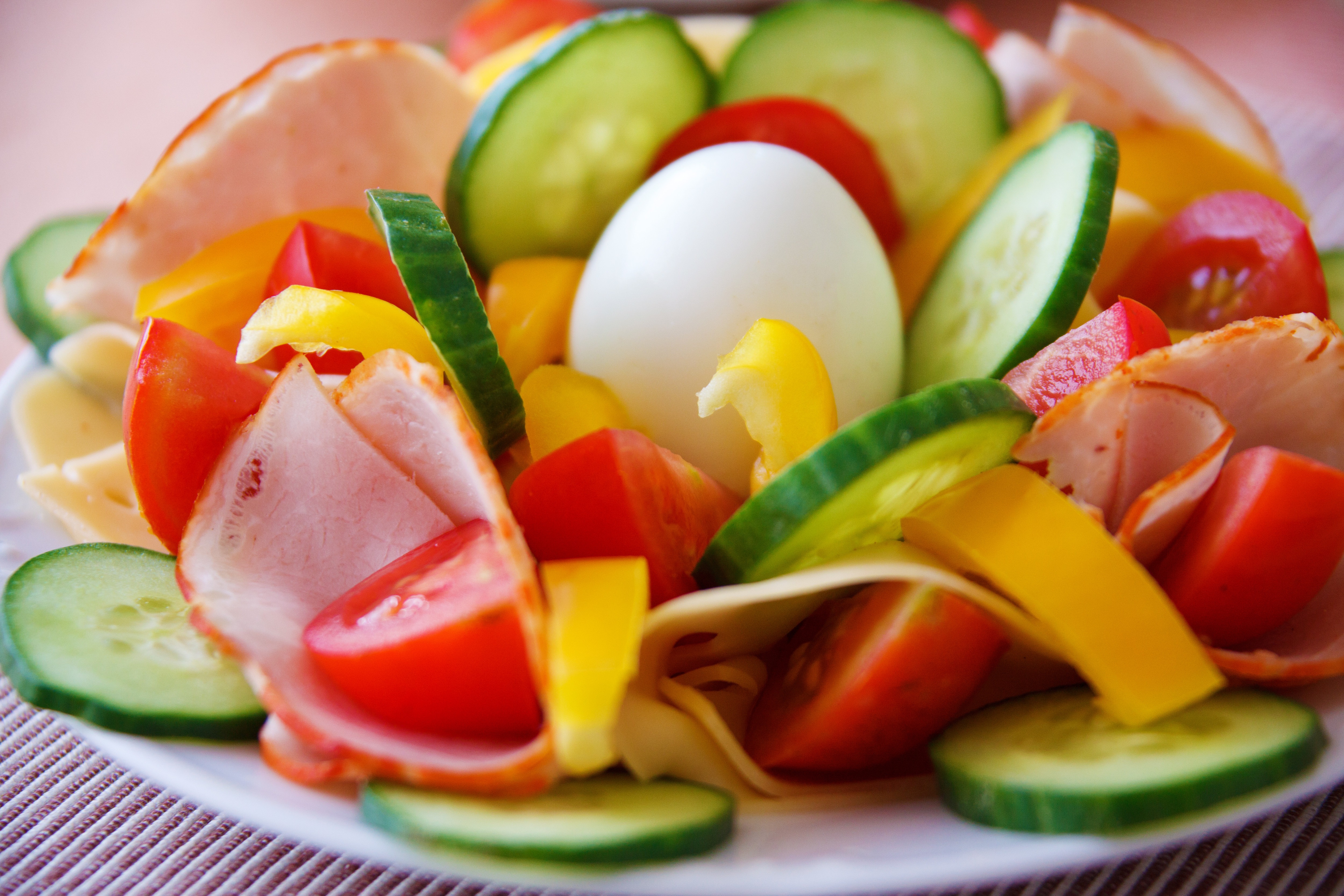 Food Synergy describes the way whole food, when consumed, provides a complex mixture of nutrients that work together in combination with your body to create powerful health benefits.
Food Synergy describes the way whole food, when consumed, provides a complex mixture of nutrients that work together in combination with your body to create powerful health benefits.
I’ve been learning a lot about the important role food synergy plays in our health. We’ve been taught that healthy eating is an easily solved mathematical calculation – simply consume the amount of nutrients based on the FDA’s % of Daily Value. If you prefer to eat foods void in nutrients (such as processed foods) or you dislike veggies, simply take a vitamin. Nutrition has become ‘medicalized’ as we reach for that perfect supplement to “cure what ails you”. The truth is, that’s not enough.
Here’s the problem with the “pill popping” kind of thinking: (more…)
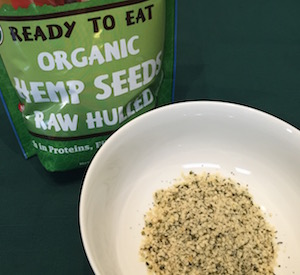
by plant4health | Aug 13, 2015 | Nutrition, Plant-based, Vegan, WFPB, Whole food, plant-based
Hemp is a common term for high-growing varieties of the herb, cannabis sativa, and its products. The versatile hemp plant is grown not only for food but also for oil, resin, wax, rope, fabric, paper, pulp and biofuel. Hemp foods are made from a variant of the cannabis plant in which the psychoactive ingredient in marijuana, THC or tetrahydrocannabinol, is so low it is non-detectable.
The primary edible part of the hemp plant are its seeds. Raw shelled hemp seeds, also known as hemp hearts, can be eaten as is or made into protein powder, oil, flour and milk. The seeds are packed with high quality protein, healthy fat, fiber, and have anti-inflammatory properties. Since they are eaten raw, they retain their enzymes, vitamins, minerals, antioxidants and chlorophyll.
In just 3 tablespoons (30g) of hemp seeds you get 13 grams of fat, 3 grams of carbohydrates and 10 grams of protein. In addition, hemp seeds are loaded with manganese, phosphorus, magnesium, thiamin, iron and zinc. See the table below based on the nutrition data from Carrington Farms.
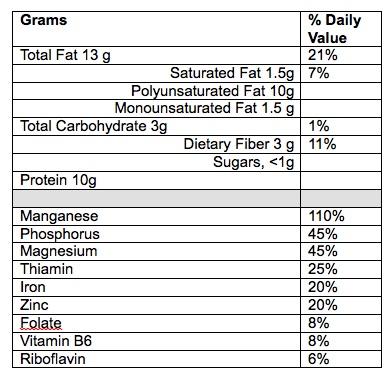
Protein:
Hemp seeds contain 33% protein and all 10 essential amino acids, making them a complete protein. According to professional vegan triathlete and author, Brendan Brazier, hemp is more alkaline than most proteins so is a great protein source if you are balancing your pH. In addition, hemp has anti-inflammatory properties namely due to an amino acid, edestin, that is an integral part of DNA. Brendan says that “it makes hemp the plant source closest to our own amino acid profile.”
Healthy fats:
Hemp seeds provide the perfect ratio (3:1) of Omega-6 to Omega-3 essential fatty acids. In 3 tablespoons you’ll get 7.5 g of Omega-6 and 3g of Omega 3. Omega-6 is pro-inflammatory and most Americans get way too much of it. Omega-3s on the other hand are anti-inflammatory. Read more about why you want to avoid inflammation.
Easy to digest:
Raw hemp protein retains naturally-occurring enzymes which make it easy to digest and absorb. Hemp milk is easier to digest than soy milk. Dr. Andrew Weil states that “hemp milk contains no oligosaccharides, complex sugars that can cause flatulence if not properly broken down during digestion” unlike soy milk.
Allergies?
According to Dr. Weil, “As far as allergies are concerned, hemp seeds and nuts do not pose the threat that tree nuts do. Similarly, anyone allergic to soy or dairy should be able to safely consume hemp milk.”
How to use:
Sprinkle hemp hearts or protein powder on your oatmeal or other cereal, in salads, soups and in smoothies. Hemp oil is dark green with a nutty flavor and makes a great salad dressing base. See our recipe for Chia, Flax, & Hemp Seed Pudding – a great way to start the day. Serve with hemp milk, sliced bananas and fresh berries!
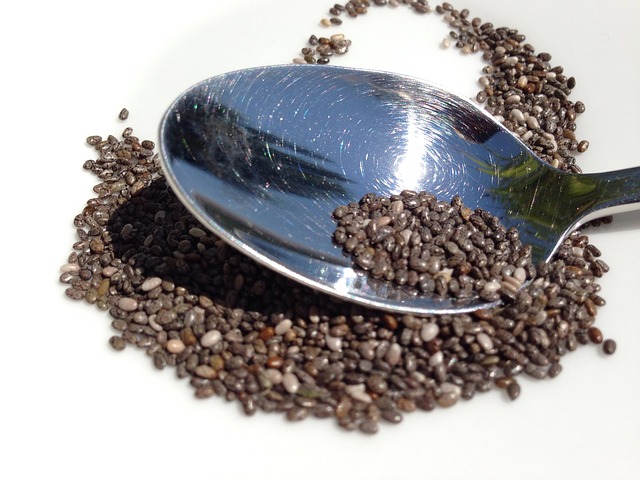
by plant4health | Aug 6, 2015 | cancer, Healing, Plant-based, Recipes, Vegan, WFPB, Whole food, Whole food, plant-based
 Chia seeds have become a trendy health food, but are they really worth the expense? A 12 oz. bag ranges from $8 to $11. This cost can put a lot of stress on the food budget.
Chia seeds have become a trendy health food, but are they really worth the expense? A 12 oz. bag ranges from $8 to $11. This cost can put a lot of stress on the food budget.
Chia seeds are tiny brown black seeds, about the size of poppy seeds. The chia plant is from the mint family, native to the deserts of Central America and Mexico. They have been a dietary staple for the Aztec and Mayans, most commonly used as an energy and hydration food for their warriors as well as a medicinal for joint and skin complaints.
Today, chia seeds are promoted as a superfood, having been proven to provide the following health benefits:
Aids in the elimination of carcinogens – Chia seeds are loaded with fiber. Eating enough fiber is extremely important as it aids in removing harmful carcinogens through the digestive tract. When in contact with liquid, the seeds expand forming a gel that adds bulk to your stools, preventing constipation by keeping your bowel movements regular. (more…)
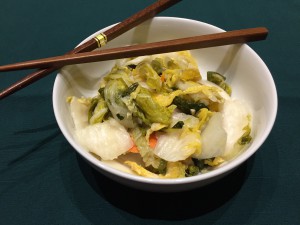
by plant4health | Jul 30, 2015 | Nutrition, Plant-based, Vegan, WFPB, Whole food
Humans have been fermenting foods for thousands of years as a means to preserve food, enhance its flavor or to make alcoholic beverages. Many types of plant foods can be fermented, including:
- Soybeans: soy sauce, miso and tempeh
- Grains: beer, bread made with yeast, whisky, vodka
- Vegetables: kimchi, sauerkraut, beets, carrots and more…
- Fruits: wine, vinegar, cider, brandy
- Tea: kombucha
Even chocolate is fermented! The cacoa seeds are fermented to develop flavor and reduce bitterness.
Fermentation is a metabolic process in which sugars are converted to acids, gases or alcohol via yeast or bacteria. In lacto-fermentation, lactobacillales, a bacteria found in plants and animals, converts sugars into lactic acid. This acid inhibits the growth of harmful bacteria, therefore preventing spoilage.
Health benefits of fermented vegetables
(more…)

 Last month, I wrote about food synergy, how healing through food is not about obtaining large amounts of any single nutrient, but how whole plant-based foods provides a complex mix of nutrients that work together synergistically within your body to create powerful health benefits we have yet to understand. My next series of blogs are going to take this concept one step further by looking at how specific food combinations enhance the nutrient potency of your meal and the bioavailability of those nutrients.
Last month, I wrote about food synergy, how healing through food is not about obtaining large amounts of any single nutrient, but how whole plant-based foods provides a complex mix of nutrients that work together synergistically within your body to create powerful health benefits we have yet to understand. My next series of blogs are going to take this concept one step further by looking at how specific food combinations enhance the nutrient potency of your meal and the bioavailability of those nutrients.





